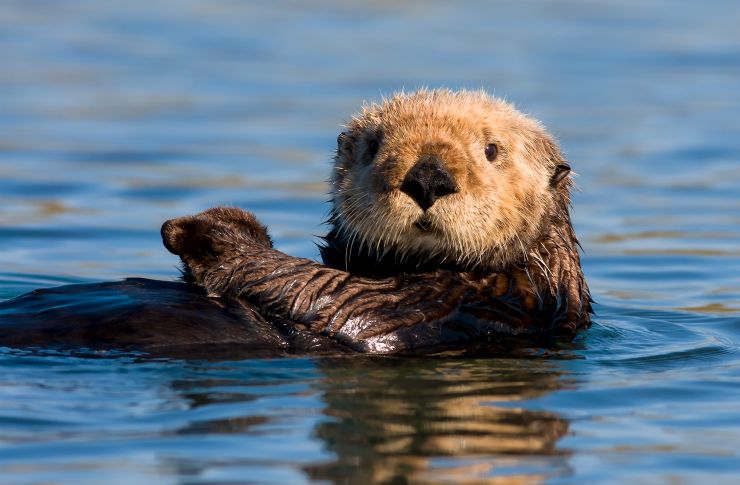Sea Otters - Did you know?
Each year, we celebrate Sea Otter Awareness Week, when we highlight the vital role our furry aquatic friends play in our ecosystem and the resulting effects they have on the well-being of our coastlines.
Sea Otters are a keystone species, meaning their role in their environment has a greater effect than other species and are needed for the overall structure and function of an ecosystem. As top predators, sea otters are critical for maintaining the health and stability of the marine ecosystems and in doing so they plentifully eat sea urchins, which eat kelp in great abundance. When the sea urchins’ populations are controlled by sea otters, vital kelp forests can flourish. Therefore, in the absence of a keystone species, many ecosystems would fail to exist.

Sea otters are easily recognised and are the smallest marine mammal in the world. They have furry bodies, whiskered faces, and a propensity to lay on their backs and float on the water.
- Known as: Sea Otter
- Scientific Name: Enhydra lutris
- Type: Mammals
- Size: 4 feet
- Weight: Average 50lbs - 70lbs
- Average Life Span: 15 - 20 years
- Diet: Carnivore
- Habitat: Coastlines of the North Pacific Rim
- Conservation Status: Endangered
Fun Facts about Sea Otters
1. They are one of 13 different otter species around the world.
2. Otters are part of the Mustelidae family, which is a family of carnivorous mammals that includes skunks, weasels, wolverines and badgers.
3. The sea otter is the largest member of the weasel family, yet the smallest marine mammal in North America.
4. Sea otters are social, and hang out together in groups called rafts. Sea otter rafts are segregated - groups of between two and 1,000 otters are either all males or females and their young.
5. Sea otters eat 25 - 40 percent of their body weight in food every day. The diet includes sea urchins, crabs, mussels, and clams.
6. Sea otters have the thickest fur of any animal. Their fur is estimated to contains one million hair follicles per square inch! Otters do lack a blubber layer so they depend on their water-resistant fur to provide insulation.
7. They spend all of their time in the ocean, including sleeping. Since they sleep at the surface, otters will either hold paws or wrap themselves in giant kelp to keep themselves from floating away.
8. An otter’s lung capacity is 2.5 times greater than that of similar-sized land mammals. They have been known to stay submerged for more than 5 minutes at a time! River otters, however, can hold their breath for up to 8 minutes.
9. A sea otter is one of the few mammals that use tools. They typically use a rock that is used as a hammer or anvil to break open hard-shelled prey.
Ever wonder where otters actually store these tools for safe keeping? They have a loose patch of skin under their armpit to store both the food they’ve foraged and their rock to crack it open.
10. Otters might look soft and cuddly but they do remain dangerous wild animals. They have strong teeth and a powerful bite so be sure to maintain a safe distance at all times!
Click here to learn more about these amazing mammals.

